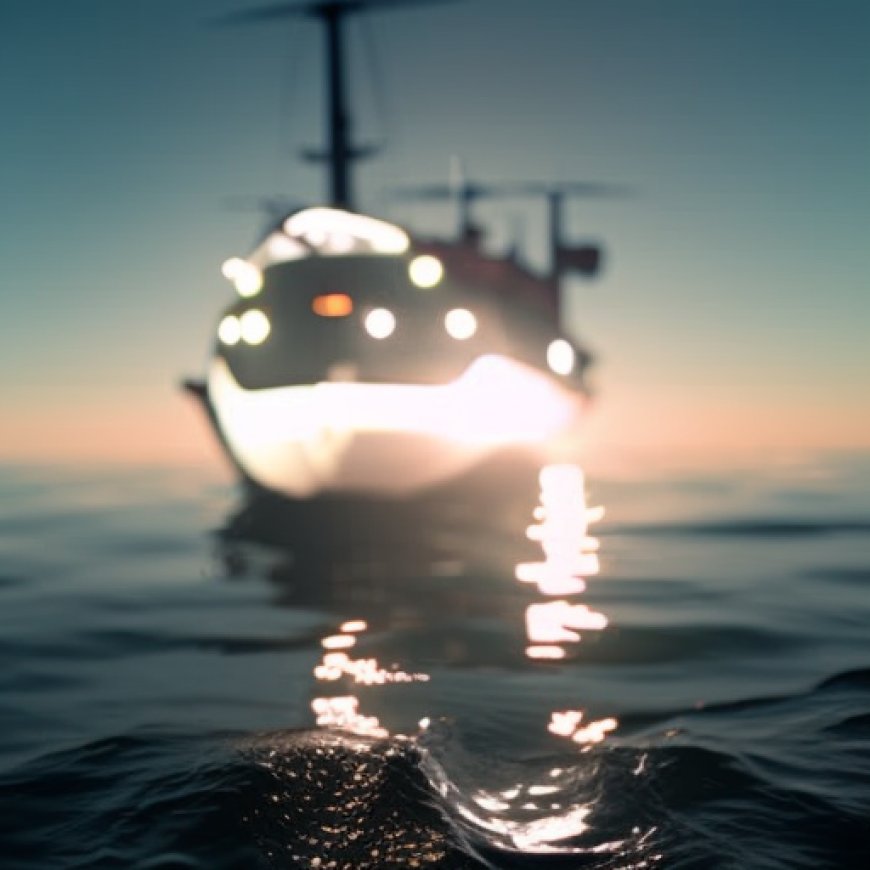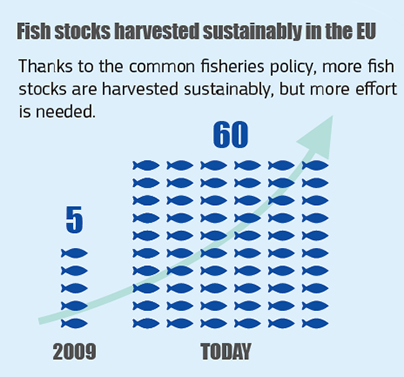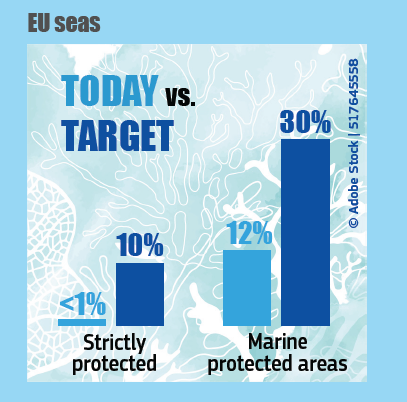Life below water: how far is the EU in implementing the UN Sustainable Development Goals?
Life below water: how far is the EU in implementing the UN ... Oceans and fisheries


Today, the European Commission presents its first-ever voluntary review on Sustainable Development Goals (SDGs) at the UN High-level Political Forum on Sustainable Development.
Halfway through the implementation of its 2030 Agenda, the record is clear: much has been achieved, but a lot is left to be done.
The SDG 14 “Life below water” presents moderate but clear progress in the EU:
- Significant progress achieved under the common fisheries policy (CFP), but sustainability levels have yet to be reached for all fisheries.

- Progress was made to establish Marine Protected Areas (MPA), but more work is needed, notably for strictly protected MPAs.

- Because of pollution and acidification, marine ecosystems remain under stress: good environmental status by 2020 has not been reached under the Marine Strategy Framework Directive (MSFD).
Through its international partnerships and leadership, the EU is championing ocean protection on a global scale by
Virginius Sinkevičius, Commissioner for Environment, Oceans and Fisheries, said:
“The EU is committed to achieving the United Nations’ sustainable development goals. It’s all interlinked. We need a healthy ocean for a healthy planet and healthy people.”
The EU Green Deal and its specific strategies and initiatives are boosting the EU’s capacity to meet the Agenda 2030 objectives
- The EU Biodiversity Strategy intends to protect at least 30% of its land areas and 30% of its sea areas by 2030
- The proposal for a Nature Restoration Law proposal sets out binding targets to restore degraded ecosystems
- The Marine Action Plan will step up action to ensure fisheries are sustainable and minimize their ecosystem impacts
Background
The 2030 Agenda for Sustainable Development, adopted by all United Nations Member States in 2015, provides a shared blueprint for peace and prosperity for people and the planet, now and into the future.
Since 2015, the EU has been placing the Sustainable Development Goals (SDGs) at the core of its policy, legislation, and funding.
Out of the 17 SDGs, success in reaching SDG 14 is linked to making progress in
- SDG 2 – more sustainable agriculture (main source of water, including marine, pollution) and more sustainable food system (including aquaculture)
- SDG 6 – reducing water pollution and tackling more effectively the interconnections between freshwaters and oceans
- SDG 15 – halting biodiversity loss in marine ecosystems through the global Convention on Biodiversity and the EU Nature Restoration Law
More information
Press release: The EU’s Voluntary Review reaffirms commitment to delivering the Sustainable Development Goals at home and around the world
EU VOLUNTARY REVIEW on the Implementation of the 2030 Agenda for Sustainable Development
SDGs, Targets, and Indicators
-
SDG 14: Conserve and sustainably use the oceans, seas and marine resources for sustainable development
- Target 14.4: By 2020, effectively regulate harvesting and end overfishing, illegal, unreported and unregulated (IUU) fishing, and destructive fishing practices and implement science-based management plans, to restore fish stocks in the shortest time feasible, at least to levels that can produce maximum sustainable yield as determined by their biological characteristics
- Target 14.5: By 2020, conserve at least 10 percent of coastal and marine areas, consistent with national and international law and based on the best available scientific information
- Target 14.7: By 2030, increase the economic benefits to Small Island Developing States (SIDS) and least developed countries from the sustainable use of marine resources, including through sustainable management of fisheries, aquaculture, and tourism
The article discusses progress made under SDG 14 “Life below water” in the EU. It mentions significant progress achieved under the common fisheries policy (CFP), but sustainability levels have yet to be reached for all fisheries. This relates to Target 14.4 on regulating harvesting and ending overfishing. The article also mentions progress in establishing Marine Protected Areas (MPAs), but more work is needed, particularly for strictly protected MPAs. This aligns with Target 14.5 on conserving coastal and marine areas. Additionally, the article highlights the need to ensure the economic benefits of marine resources for Small Island Developing States (SIDS) and least developed countries, which corresponds to Target 14.7.
-
SDG 2: Zero Hunger
- Target 2.4: By 2030, ensure sustainable food production systems and implement resilient agricultural practices that increase productivity and production, that help maintain ecosystems, that strengthen capacity for adaptation to climate change, extreme weather, drought, flooding, and other disasters, and that progressively improve land and soil quality
The article mentions that SDG 14 is linked to making progress in SDG 2. It specifically refers to the need for more sustainable agriculture, which is the main source of water, including marine pollution. This aligns with Target 2.4 on implementing resilient agricultural practices that help maintain ecosystems.
-
SDG 6: Clean Water and Sanitation
- Target 6.3: By 2030, improve water quality by reducing pollution, eliminating dumping and minimizing release of hazardous chemicals and materials, halving the proportion of untreated wastewater, and substantially increasing recycling and safe reuse globally
The article also links SDG 14 to progress in SDG 6. It mentions the need to reduce water pollution and tackle the interconnections between freshwaters and oceans. This relates to Target 6.3 on improving water quality by reducing pollution and minimizing the release of hazardous chemicals and materials.
-
SDG 15: Life on Land
- Target 15.5: Take urgent and significant action to reduce the degradation of natural habitats, halt the loss of biodiversity, and protect and prevent the extinction of threatened species
The article highlights the importance of halting biodiversity loss in marine ecosystems through the global Convention on Biodiversity and the EU Nature Restoration Law. This aligns with Target 15.5 on taking urgent action to reduce habitat degradation, halt biodiversity loss, and protect threatened species.
| SDGs | Targets | Indicators |
|---|---|---|
| SDG 14: Conserve and sustainably use the oceans, seas and marine resources for sustainable development |
|
No specific indicators mentioned in the article. |
| SDG 2: Zero Hunger |
|
No specific indicators mentioned in the article. |
| SDG 6: Clean Water and Sanitation |
|
No specific indicators mentioned in the article. |
| SDG 15: Life on Land |
|
No specific indicators mentioned in the article. |
Behold! This splendid article springs forth from the wellspring of knowledge, shaped by a wondrous proprietary AI technology that delved into a vast ocean of data, illuminating the path towards the Sustainable Development Goals. Remember that all rights are reserved by SDG Investors LLC, empowering us to champion progress together.
Source: oceans-and-fisheries.ec.europa.eu

Join us, as fellow seekers of change, on a transformative journey at https://sdgtalks.ai/welcome, where you can become a member and actively contribute to shaping a brighter future.







